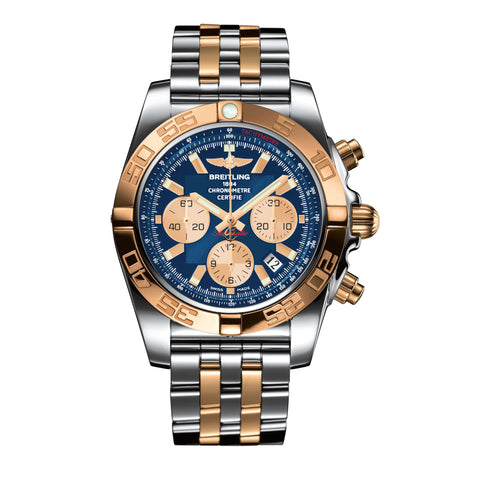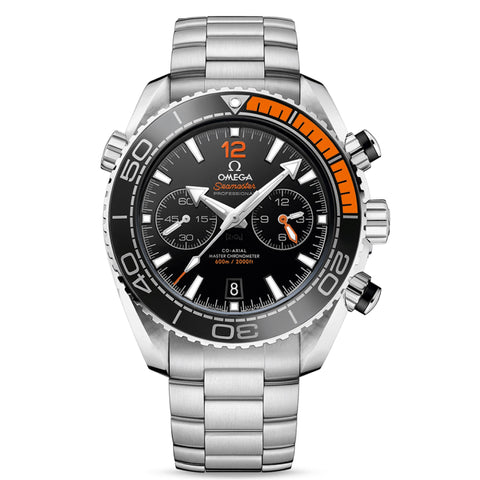Capturing Time - A Look at Three Chronograph Wristwatch Makers in the 21st Century

Ever since man has been able to quantify time in measurable increments, the dreams of slowing, saving and even going back in time have been at the forefront of his imagination and theories. Alas, the closest that we have come to capturing time is starting and stopping moments in time’s continuum.
The Olympics give us recordings of these time captures by listing the world records of the events being timed. What makes the recording of these times possible are what we refer to as stop-watches, chronographs, or chrono-scopes (as they were originally called), which can measure time up to the 10th, 100th or 1000th of a second for “split second” timing. In the world of luxury watchmaking, the chronograph has become the complication of choice among not only connoisseurs, but among fans of every brand imaginable.
It wasn’t too long ago when most brands bought a very good chronograph movement from suppliers, resulting in most watches having the same “engine,” but various aesthetic takes on the dial. That all began to change in 2009.
In 2005, due to a key movement-supplier deciding to cut back on sales of their chronograph movements (ETA-ValJoux), many brands realized that their survival depended on making the investments necessary to develop their own in-house chronograph movements. Unknown to most customers, these investments can be anywhere between 3-to- 5 million dollars for the development of a single, time-only movement, and easily double that for an integrated chronograph movement.

One of the leaders in the field of chronographs is Breitling, whose early investments in wrist-borne chronographs set the stage for all other brands. In 1915, Breitling released a chronograph with an independent pusher at 2 o’clock, with which you could start and stop the chronograph’s functions. The reset was still done by using a button mounted on the winding stem, where, up until 1915, all start, stop and reset functions had been controlled. In 1934, Breitling developed the second independent push-piece at 4 o’clock, used for resetting the chronograph movement to “zero,” and this layout is how all chronographs (with rare exception) have been displayed ever since.
In 2009, Breitling launched the Caliber 01, their first in-house developed, self-winding chronograph movement. The criteria they imposed on it was that their movement had to be extremely robust, easy to service, and easy to read. Additionally, the watch boasts a single spring, 70-hour power reserve, allowing it to be put down for 2 days and picked back up the third day without having to reset the hands and date. Handy for those who like to rotate their watches. The 01 can currently be seen in the Navitimer, Chronomat and Transocean lines.

TAG HEUER CARRERA CALIBRE HEUER 01
In 2010, Tag-Heuer released the Caliber 1887. The name chosen was based on a key chronograph component which Heuer had patented in the year 1887, the rocking pinion. This component was so efficient that, once the patent was exhausted, the industry at large adopted it, first in pocket watches, and later in wrist watches.
The 1887 was tweaked and updated over the next few years and the Tag-Heuer Caliber 01 was released in 2017, to great fanfare. The movement has a beautifully tactile feel when engaging, which is a direct result of the rocking pinion. These movements can be found in the Carrera family of watches. Additionally, the watch has a 50-hour power reserve.

In 2011, Omega, no stranger to in-house movements, launched their Caliber 9300 self-winding Chronograph movement. Extremely durable, the 9300 uses a mono-counter at 3 o’clock to make reading the chronograph intuitive, since it reads just like a clock. Additionally, Omega incorporated a time-zone function, which allows the wearer to move the hour hand forwards or backwards in 1-hour jumps, and causing the date to move in both directions, which is very handy for frequent flyers traveling through different time zones.
Most importantly, Omega has accomplished what few brands have even dared to try: all the parts of the movement are now made out of completely non-magnetic materials. So, daily wear will have no effect on the watches rate accuracy as the watch ages (magnetism is the #1 enemy of mechanical watches).
The movement uses two springs providing 60 hours of power, and the glory of the 9300 may be seen through the exhibition back, revealing the snail-wave engraving on the rotor and bridges. The 9300 resides in various Speedmaster, Seamaster and DeVille families.


